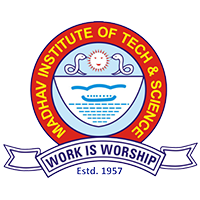The vision of the department is to impart knowledge of mathematics and computer sciences that serve to groom the academic potential of student and abreast with recent technological developments. With respect to potential areas of research of the Department in order to commercialize the research outcomes through development of products or services are
1. Fluid Dynamics
2. Population Dynamics
3. Queuing theory
4. Statistical Techniques
5. Special functions
Applications and Current research work of the above mentioned potential area
1. Fluid Dynamics
The study of fluid dynamics yields different method to understand weather predictions (weather forcasting), blood circulation, ocean currents, air conditioning systems, wind turbines and rocket engines etc. The current area of research in fluid dynamics are Non-Newtonian Fluid Dynamics, Biological Fluid Dynamics, Microhydrodynamics, Hydrodynamic Instability and Transition to Turbulence, Geophysical and Environmental Fluid Dynamics (GEFD).
2. Population Dynamics
The understanding of population dynamics enables us to know the relative importance of competition for resources and predation in ecological communities. It is area of mathematics which used to model and study the age and size of composition of population as dynamical system. The current area of research in population dynamics is management of natural resources, preserving biodiversity, cases of COVID -19, demography (Global Family Change (GFC)), Human resource
and endowment etc.
3. Queuing Theory
The queuing theory is branch of operational research (Optimization engineering) that deals with the study of queues (Waiting lines). The mathematical model of queuing system enables us to predict waiting time and length of the queue. The application of queuing theory can be seen in scheduling (viz. jobs of machines, programs on computer, patients in hospital etc.), traffic flow (aircraft, vehicles, telecommunication etc.) and facility design (post offices, supermarkets, banks etc.). The
current research areas of queuing theory are in construction management, hospital pharmacy performance (controlling and monitoring the medication), air defence missile weapon system etc.
4. Statistical Techniques
The statistical techniques apply to descriptive statistic (deals with properties of sample and population data) and inferential statistic (testing hypothesis and making conclusion). The current areas of research in statistical techniques are data mining and statistical analysis, data engineering, database management and architecture, business intelligence and engineering and market data analysis.
5. Special Functions
The special function lies in mathematical physics which includes function like gamma function, beta functions, hypergeometric functions, Meijer G- function, Legendre’s and Bessel’s functions, Whittaker function, reimann zeta function and their extension etc. Current areas of special functions are in fractional calculus, astronomy, cardiac pacemaking function, analytic number theory and coherent states etc.
Summary of the focused Area of the Department
|
S.No. |
Focused Area |
Applications |
Current Area |
|
1. |
Fluid Dynamics |
Weather predictions (weather forcasting), blood circulation, ocean currents, air conditioning systems, wind turbines and rocket engines |
Non-Newtonian Fluid Dynamics, Biological Fluid Dynamics, Microhydrodynamics, Hydrodynamic Instability and Transition to Turbulence, Geophysical and Environmental Fluid Dynamics (GEFD), Biological fluid Flows, Nanofluid flow |
|
2. |
Population dynamics |
Competition for resources and predation in ecological communities |
management of natural resources, preserving biodiversity, cases of COVID -19, demography (Global Family Change (GFC)), Human resource and endowment etc. |
|
3. |
Queuing Theory |
Scheduling (viz. jobs of machines, programs on computer, patients in hospital etc.), traffic flow (aircraft, vehicles, telecommunication etc.) and facility design (post offices, supermarkets, banks etc.) |
Construction management, hospital pharmacy performance (controlling and monitoring the medication), air defence missile weapon system etc. |
|
4. |
Statistical Techniques |
Sample and population data and hypothesis testing and making conclusion). |
Data mining and statistical analysis, data engineering, database management and architecture, business intelligence and engineering and market data analysis |
|
5. |
Special Functions |
Mathematical physics, astrology, quantum theory, |
Fractional calculus, astronomy, cardiac pacemaking function, analytic number theory and coherent states etc. |









